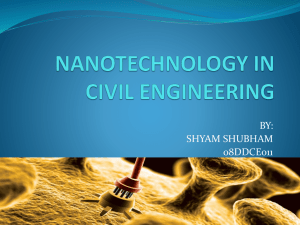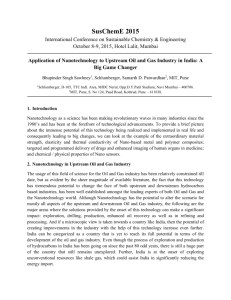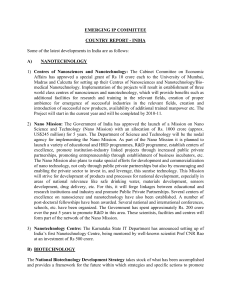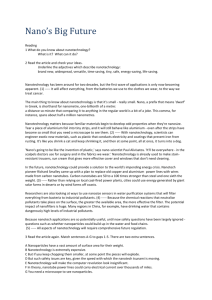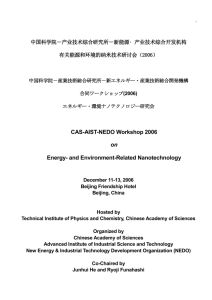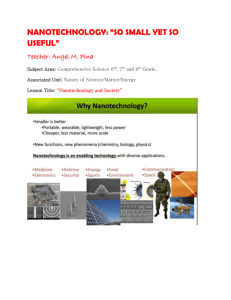Sergio Kapusta -- Shell Chief Scientist Materials
advertisement
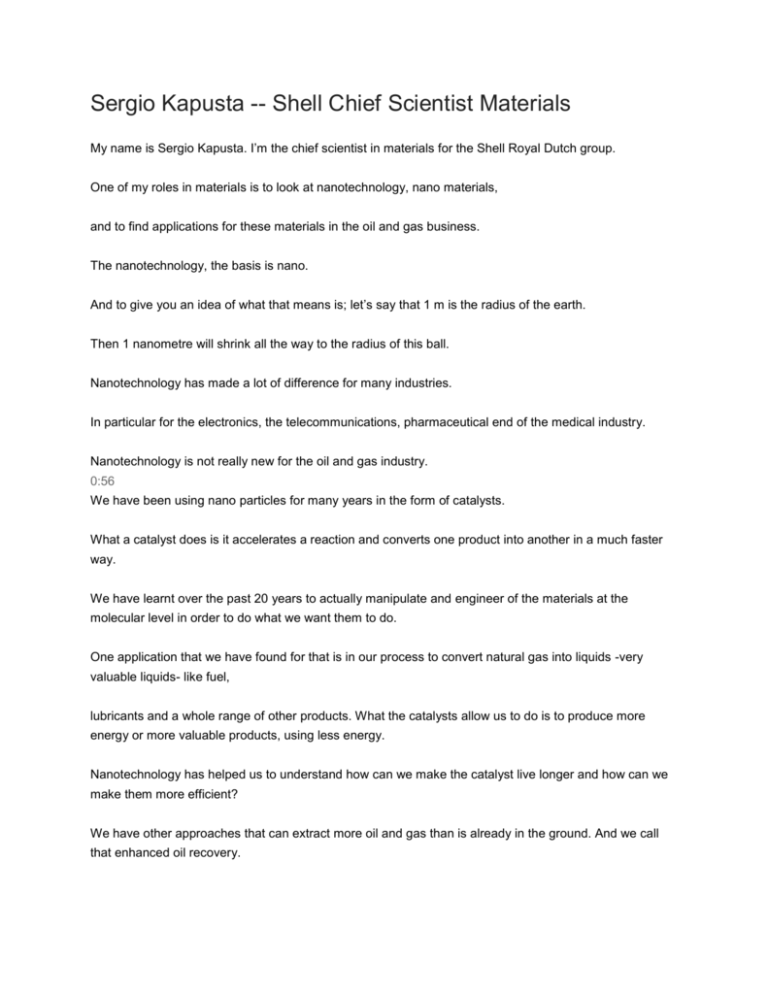
Sergio Kapusta -- Shell Chief Scientist Materials My name is Sergio Kapusta. I’m the chief scientist in materials for the Shell Royal Dutch group. One of my roles in materials is to look at nanotechnology, nano materials, and to find applications for these materials in the oil and gas business. The nanotechnology, the basis is nano. And to give you an idea of what that means is; let’s say that 1 m is the radius of the earth. Then 1 nanometre will shrink all the way to the radius of this ball. Nanotechnology has made a lot of difference for many industries. In particular for the electronics, the telecommunications, pharmaceutical end of the medical industry. Nanotechnology is not really new for the oil and gas industry. 0:56 We have been using nano particles for many years in the form of catalysts. What a catalyst does is it accelerates a reaction and converts one product into another in a much faster way. We have learnt over the past 20 years to actually manipulate and engineer of the materials at the molecular level in order to do what we want them to do. One application that we have found for that is in our process to convert natural gas into liquids -very valuable liquids- like fuel, lubricants and a whole range of other products. What the catalysts allow us to do is to produce more energy or more valuable products, using less energy. Nanotechnology has helped us to understand how can we make the catalyst live longer and how can we make them more efficient? We have other approaches that can extract more oil and gas than is already in the ground. And we call that enhanced oil recovery. One of the ways in which enhanced oil recovery can operate is by sweeping the oil out of the rocks using water. But we need the water with particular sets of properties and nanotechnology, nano particles, can help us tune the properties of water to what is needed for each specific reservoir. One of the problems that we face in the oil and gas industry is to know exactly where the oil and gas is. Many people have the idea that oil and gas sits in a large swimming pool, somewhere 2 km below the surface. But that’s not necessarily true. What we have down in the surface is a very tight mesh of rocks with some holes -we call them poreswhere the oil is tightly held. And we would like to know exactly where the oil is and also how we can get it out. Now if you compare the oil and gas industry to the medical industry, imagine that our patient, the oil and gas down hole that we want to know where it is, is a patient that we can only reach remotely. So how do we get information about our patient? Well, one of the ways that we can do that is by sending agents. These agents -we will call them the nano particles- and imagine that the agents go down to the reservoir where the oil and gas sit and somehow they send us information back. Well, they could do that in several ways. One way is we send the agents down to where the oil and gas is and then we bring them back out and then we interrogate it. They have a certain memory. Another way which is a little bit farther into the future is if while they are travelling through the veins and arteries of our reservoir patient, they transmit this information continuously back to the surface. And this may sound a little bit science fiction, but actually it is not; we can do some of that already on a small scale, on a bench top. The challenge of course is how can we do it when the actual place is 2 km down hole? That’s where our investigation is going. Nanotechnology has already made a large impact in many aspects of our life. From the computer screen that we use every day to a tennis racket that has better return properties because of the enhanced materials that it contains. In the oil and gas industry we have used parts of nanotechnology for many years, but really we are at the beginning of this enormous potential that nanotechnology has for us. Shell is very much committed to innovation and research in order to produce more oil, gas and convert it to usable products. In fact, I’m very proud of the fact that in 2009 we spent something like 1.1 billion dollars in research, and that makes us the largest investor in research among all the international oil companies. Nanotechnology fits within this area. We at Shell are very enthusiastic about the possibilities that nanotechnology offers to produce more oil and gas to meet the energy demand into the future.



